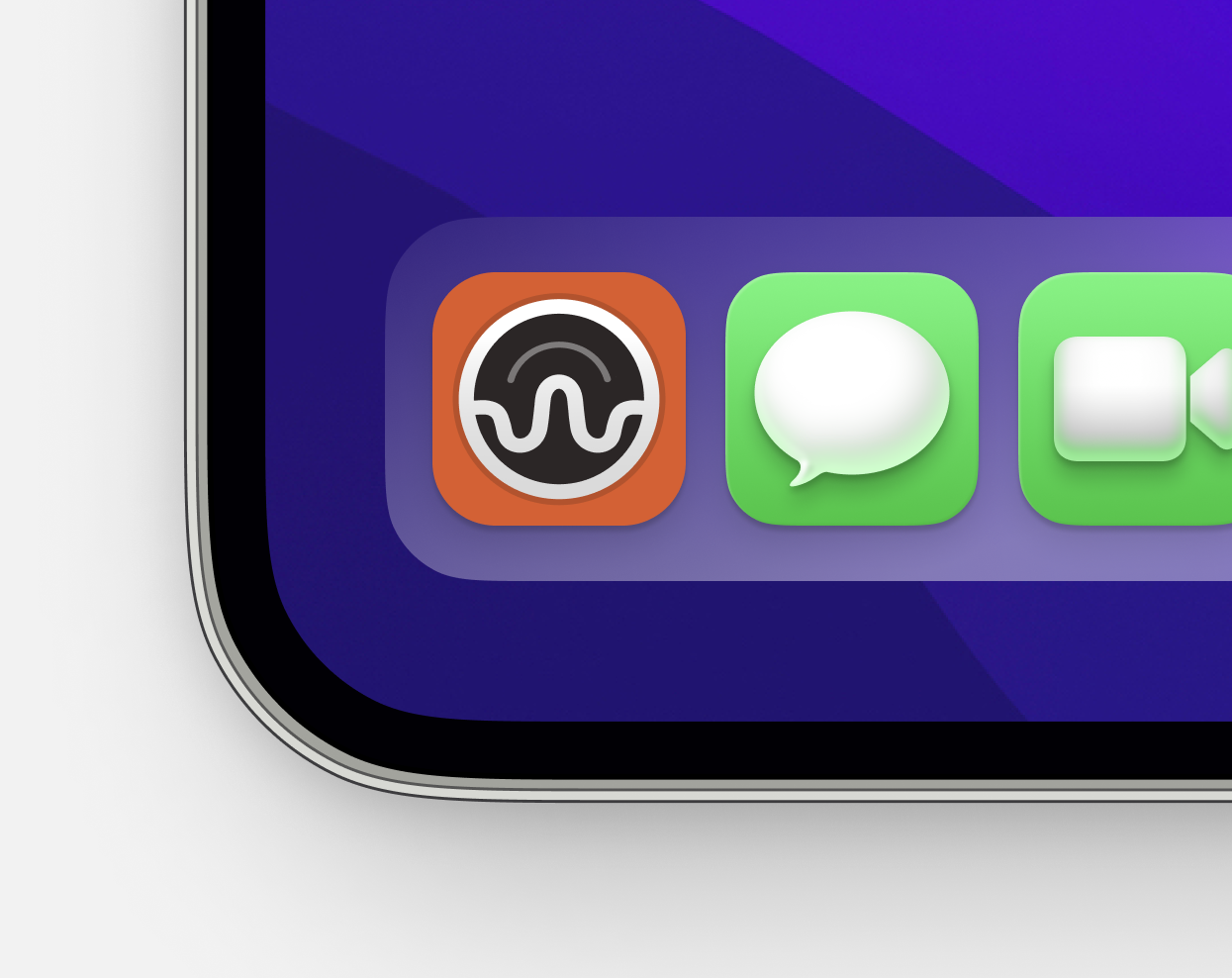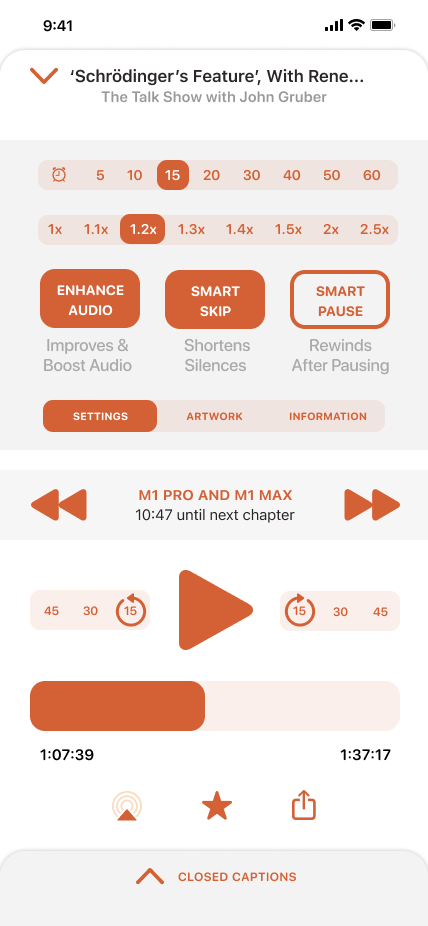beyond pressing play
Led design of EarWorm Podcast app focusing on accessibility and experience for users.

“accessible design is good design — it benefits people who don’t have disabilities as well as people who do. Accessibility is all about removing barriers and providing the benefits of technology for everyone.”
— Steve Ballmer
It began with a vision for the ‘perfect’ podcast application, translating sketches and ideas into wireframes and digital designs that led to a full-featured and user-friendly podcasting app, Ear Worm Podcast. This quickly became the basis of a comprehensive pitch to potential investors.
the challenge
Accessibility Design
I searched for a podcasting app that offered a range of features, is easy to use, and requires minimal effort to subscribe to your favorite podcasts. Too many apps have complicated setup processes, rely on frequent user engagement to keep going, and lack a modern accessible design. I wanted an app that would be ready to go when it was filled with podcasts and required minimal interaction every time I wanted to listen. From my research, the major challenges I faced in designing this app were:
- Overly Complex Setup: Many podcast apps have cumbersome setup processes that deter users from getting started quickly.
- High Maintenance Design: Some apps require constant user interaction to maintain functionality, which can be frustrating for listeners who simply want to enjoy their podcasts.
- Outdated Design: Outdated interfaces lack accessibility and make it difficult for users to navigate and find what they’re looking for.
discovery
What Does An ‘App’ Mean to You?
The discovery phase was a quick, high-intensity effort that allowed me to define what the design and features would be by reviewing the competitor landscape and understanding our user’s needs, behaviors, and pain points.
Starting by crafting user personas, allowed me to strategize where to prioritize in the early stages of design. Using these personas constantly throughout the project guided design decisions, and priorities, and led an empathy-focused design language throughout the project. Sarah, a college student from a rural area, seeks a user-friendly interface with genre-based recommendations and social sharing features to help her explore and discuss various podcast genres. Emily, a marketing manager in an urban setting, values easy navigation, offline listening, and personalized recommendations for managing podcasts during her data-limited commute. Alex, a tech enthusiast and software developer, is looking for an app with seamless integration across devices, in-depth discussions, and notifications for new episodes from his favorite tech channels. Lastly, Chris, a disability rights advocate who is blind, requires robust accessibility features such as screen reader compatibility, high contrast options, and intuitive navigation to ensure an inclusive and user-friendly experience.


To gain a deeper understanding of how users interact with podcast apps, I conducted a user research survey targeting podcast users, over 1,000 individuals responded, offering valuable insights into their podcast listening habits. Interestingly, the survey revealed that Apple Podcasts and PocketCasts were the two most used apps. While most users expressed general satisfaction with their current experience, some key desires emerged. Auto ad skip/block functionality was a top request, alongside improvements in search functionality and user customization options. These findings suggest that while users are content with the core functionalities, there’s room for improvement in specific areas. By delving into these user insights, we can identify ways to enhance the podcast listening experience, addressing frustrations with ads and search limitations while offering more personalized features that cater to the evolving needs of listeners.
the process
Translating sketches and ideas into wireframes and digital designs marked a critical step in developing the Ear Worm Podcast. The emphasis was on creating a visually appealing and intuitive interface that enhances usability and accessibility. Key features included seamless navigation, personalized recommendations, and offline listening capabilities—catering to users like Emily, the commuter listener, and Alex, the tech enthusiast seeking integration with their devices.

To enhance the user experience and create a memorable brand identity for the Ear Worm Podcast app, a unique worm-like character was introduced, inspired by the concept of an “earworm”—the persistent sensation of having a catchy tune or lyric stuck in one’s head. This character draws design elements from popular Tamagotchi-style games and Carrot Weather’s whimsical avatars, adding a playful and engaging touch to the app. The worm character serves as the app’s mascot, offering a face for the onboarding process and adding a layer of charm that differentiates Ear Worm Podcast from other podcast apps. This addition not only provides users with a fun and interactive element but also reinforces the app’s brand identity. Importantly, the character is designed with user flexibility in mind; those who prefer a more streamlined experience can easily disable the worm feature, ensuring that the app remains versatile and accessible to all users. This thoughtful integration of character design helps transform the Ear Worm Podcast from a mere utility into an engaging and personalized experience, catering to both those who enjoy playful interactions and those who seek a straightforward listening platform.



The culmination of these efforts resulted in a full-featured podcasting app poised for a comprehensive pitch to potential investors. Highlighting its user-centric design, robust accessibility features, and alignment with identified market needs, the pitch aimed to secure support for scaling the app’s reach and impact.
in result
Shaping the Future of Podcast Listening















Ear Worm Podcast represents more than just a technological solution; it embodies a commitment to user satisfaction and inclusivity in podcasting. By leveraging insights from user personas, extensive research, and iterative design processes, the app promises to redefine how listeners engage with their favorite content. Moving forward, ongoing user feedback and technological advancements will continue to drive enhancements, ensuring Ear Worm Podcast will remain at the forefront of accessible and enjoyable podcast experiences.
continue to next case study
In crafting The Wanderway’s brand identity, I aimed to capture the essence of exploration and storytelling that defines classic picture books. By blending nostalgic colors, whimsical typography, and symbolic imagery, I created a visual experience that invites all ages to embark on a magical journey through the world of stories.